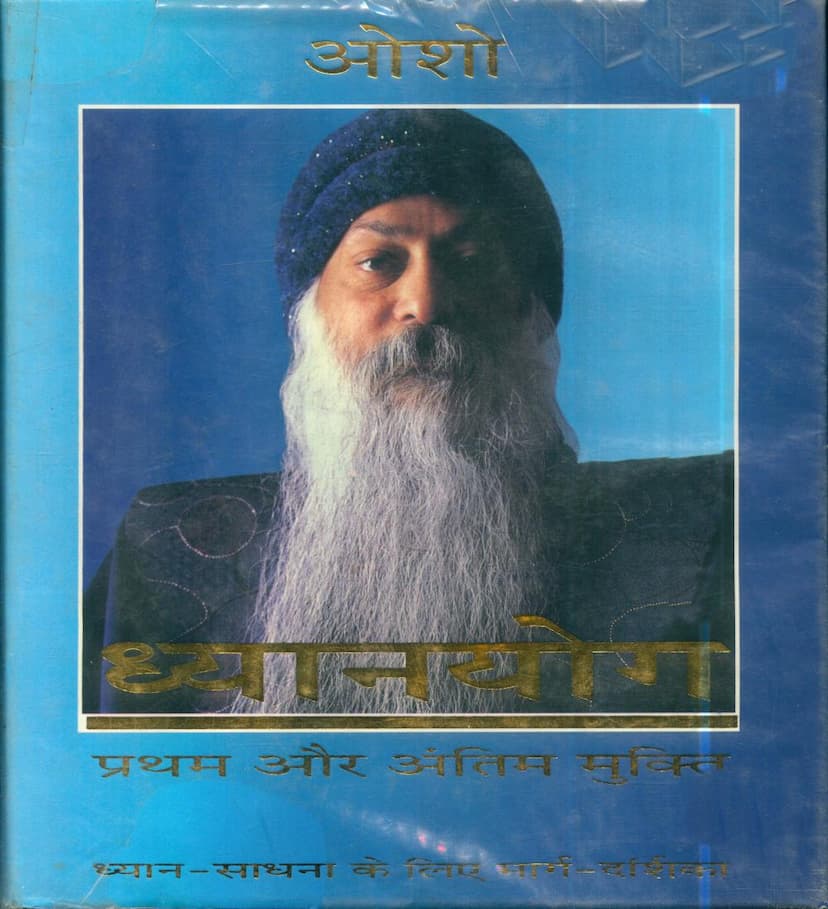Dhyanyog Pratham Aur Antim Mukti
Added to library: September 1, 2025

Summary
The book "Dhyanyog Pratham aur Antim Mukti" (Meditation: The First and Last Freedom) by Osho Rajneesh, published by Rebel Publishing House, Pune, is a comprehensive guide to meditation. It delves into the nature of meditation, its scientific aspects, and offers a wide array of meditation techniques.
Key Themes and Concepts:
- Meditation as a Natural State: Osho emphasizes that meditation is not something to be acquired but rather a natural state of being that we are born with. He describes it as an inherent quality of our consciousness, our true nature, which we have forgotten due to the mind's constant activity.
- The Nature of Meditation: Meditation is presented as being, a state of doing nothing, free from thought, action, or emotion. This state of pure being is described as the source of immense bliss. It is not an effort but a relaxation into one's own true nature.
- The Science of Meditation: The book outlines the scientific principles behind meditation, highlighting its methodical approach. Osho explains that while meditation itself is not a method, methods serve as tools or pathways to help individuals discover their inherent meditative state. He stresses the importance of understanding and correctly applying these methods.
- Methods as Tools, Not the Goal: Osho clarifies that the various meditation techniques presented are aids, not the ultimate goal. The ultimate goal is the state of meditation itself, which is achieved through correct practice and a shift in consciousness. He advises against rigidly adhering to methods and encourages moving beyond them once their purpose is served.
- The Importance of Observation and Witnessing (Sakshi Bhav): A central theme is the practice of witnessing – observing thoughts, feelings, and sensations without judgment or identification. This detached observation is presented as the very soul of meditation, leading to inner stillness and clarity.
- The Playfulness of Existence: Osho encourages a playful approach to meditation and life. He suggests approaching spiritual practices not with seriousness or as a heavy duty, but with a sense of joy and celebration, like a child playing.
- Overcoming the Mind: The book addresses the challenges posed by the mind, such as its constant chatter, its tendency to cling to experiences, and its creation of illusions and distractions. Osho provides methods and insights to transcend the mind's limitations through awareness and presence.
- Variety of Meditation Techniques: The book offers a vast range of meditation techniques, drawing from various traditions and Osho's own innovative approaches. These include:
- Active Meditations: Techniques that involve physical activity, breathing exercises, sound, and emotional expression as a way to release suppressed energies and prepare the mind for stillness (e.g., Dynamic Meditation, Kundalini Meditation, Whirling Meditation).
- Observational Meditations: Techniques that focus on observing a particular object or phenomenon, such as breath awareness (Vipassana), breath intervals, the nose tip, or the mind's activity.
- Inner Exploration Meditations: Methods that guide the practitioner inward, exploring different energy centers, light, darkness, or the self (e.g., meditations on light, darkness, inner centering, the self).
- Devotional Meditations: Techniques that involve chanting, prayer, or focusing on divine love (e.g., Prayer Meditation, Naadbrahma Meditation).
- Meditations on Existence: Practices that involve observing or becoming one with natural elements like dance, movement, music, and silence (e.g., Dance as Meditation, Music as Meditation, Nada Brahma).
- Meditations on Inner States: Methods that address emotional and mental states, such as laughter, crying, or experiencing inner silence.
- Specific Meditations: Techniques like "Mystic Rose" (a cathartic process), "No-Mind," "Born Again," and "Gourishankar" meditation.
- The Role of Music: Osho highlights the symbiotic relationship between music and meditation, noting how music can facilitate deeper meditative states.
- Overcoming Obstacles: The book addresses common obstacles in meditation, such as the ego, the chattering mind, and misconceptions about meditation itself. It offers guidance on how to navigate these challenges.
- Meditation as a Path to Freedom: Ultimately, the book presents meditation as the path to the first and last freedom – liberation from the mind's limitations and the attainment of one's true, liberated self.
In essence, "Dhyanyog Pratham aur Antim Mukti" is an encyclopedic exploration of meditation, offering a practical, experiential, and profound approach to understanding and integrating this transformative practice into one's life. Osho's unique perspective bridges the gap between ancient wisdom and modern sensibilities, making the timeless art of meditation accessible and relevant to contemporary seekers.